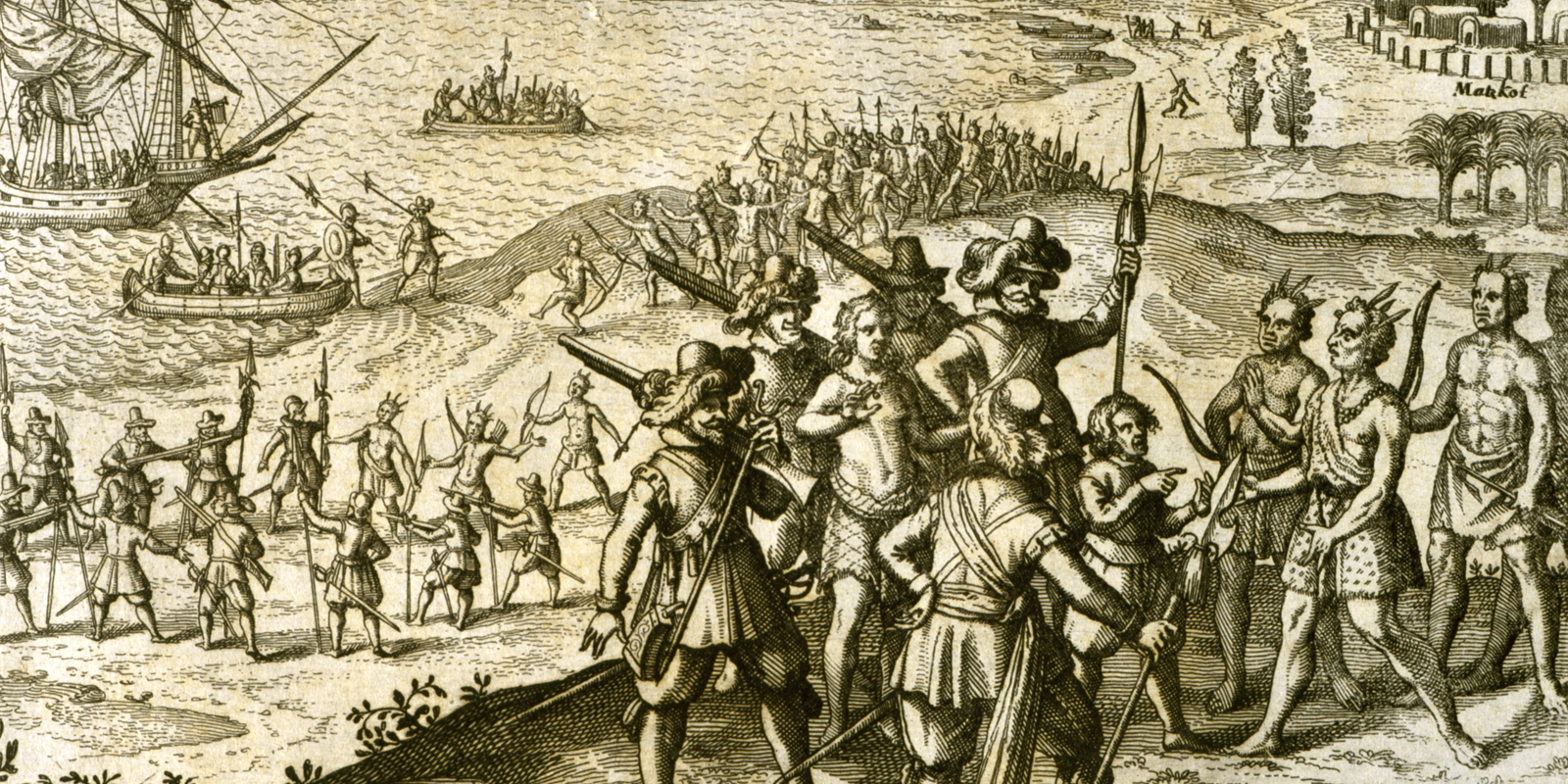1.6 Cultural Interactions Between Europeans, Native Americans, and Africans
2 min read•may 1, 2021
Caleb Lagerwey
Robby May
AP US History 🇺🇸
454 resourcesSee Units
The Birth of a New Society
The clash of Native Americans, Europeans, and Africans produced a new society in both North and South America. Columbus’ voyage started a long chain of events that led to the decline of Native Americans, introduction of new plants and animals, and the forceful removal of millions of Africans. The story of the United States of America began as these three worlds converged. In 1607, a group of English settlers arrived in Jamestown, Virginia as part of a joint-stock company called the Virginia Company. Like Columbus, these English settlers encountered many indigenous tribes which made up what is commonly referred to as the Powhatan Nation.

Theodor de Bry, “Negotiating Peace With the Indians,” 1634, Virginia Historical Society.
Native American Trade with Europeans
Most Europeans looked down on Native Americans and saw them as inferior people who could be exploited for economic gain, converted to Christianity, and used as military allies. However, Native Americans were not passive victims of geopolitical forces beyond their control. As long as they remained healthy, they held their own in early exchanges. What they desired most was peaceful trade. In fact, French explorers recorded that Natives waved from shore, urging the Europeans to exchange metal items for beaver skins. The Natives did not perceive themselves as at a disadvantage in these proceedings. They thought it was crazy that the English would give them 20 knives for one beaver skin.
Over time, cooperative encounters between Indians and Europeans became less frequent. English planters cleared the forests and fenced the fields, radically altering the ecological systems on which Indians depended. Natives discovered that the objects they desired from Europeans brought them into debt. To pay for these goods they hunted more aggressively and even further reduced the population of fur-bearing mammals. Natives grew dependent on trade for guns and ammunition and learned that wars would lead to a suspension of normal trade.
Spanish Policy Towards Natives
One European who dissented from the views of most Europeans toward Native Americans was a Spanish priest named Bartolome de Las Casas. He had owned land and slaves in the West Indies and had fought in wars against the Indians, but eventually became an advocate for better treatment of the Indians. In the long term, he persuaded the Spanish king to institute the New Law of 1542. These laws ended indigenous slavery, halted forced native labor, and began to end the encomienda system, a Spanish labor system used in Spain's colonies which included forced labor of non-Christian indigenous peoples.
Browse Study Guides By Unit
🌽Unit 1 – Interactions North America, 1491-1607
🦃Unit 2 – Colonial Society, 1607-1754
🔫Unit 3 – Conflict & American Independence, 1754-1800
🐎Unit 4 – American Expansion, 1800-1848
💣Unit 5 – Civil War & Reconstruction, 1848-1877
🚂Unit 6 – Industrialization & the Gilded Age, 1865-1898
🌎Unit 7 – Conflict in the Early 20th Century, 1890-1945
🥶Unit 8 – The Postwar Period & Cold War, 1945-1980
📲Unit 9 – Entering Into the 21st Century, 1980-Present
🚀Thematic Guides
🧐Multiple Choice Questions (MCQ)
📋Short Answer Questions (SAQ)
📝Long Essay Questions (LEQ)
📑Document Based Questions (DBQ)
📆Big Reviews: Finals & Exam Prep
✍️Exam Skills (MC, SAQ, LEQ, DBQ)

Fiveable
Resources
© 2023 Fiveable Inc. All rights reserved.